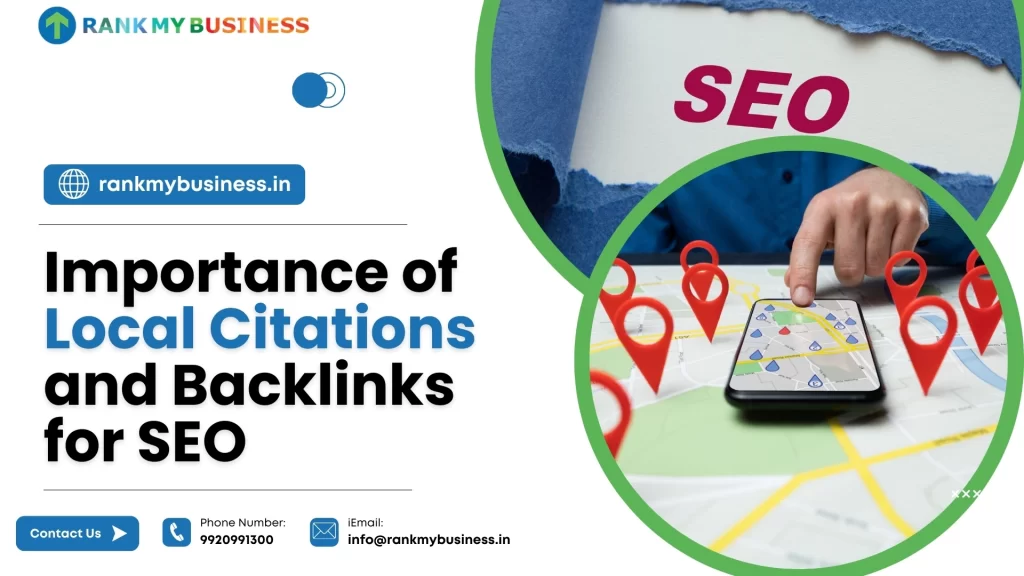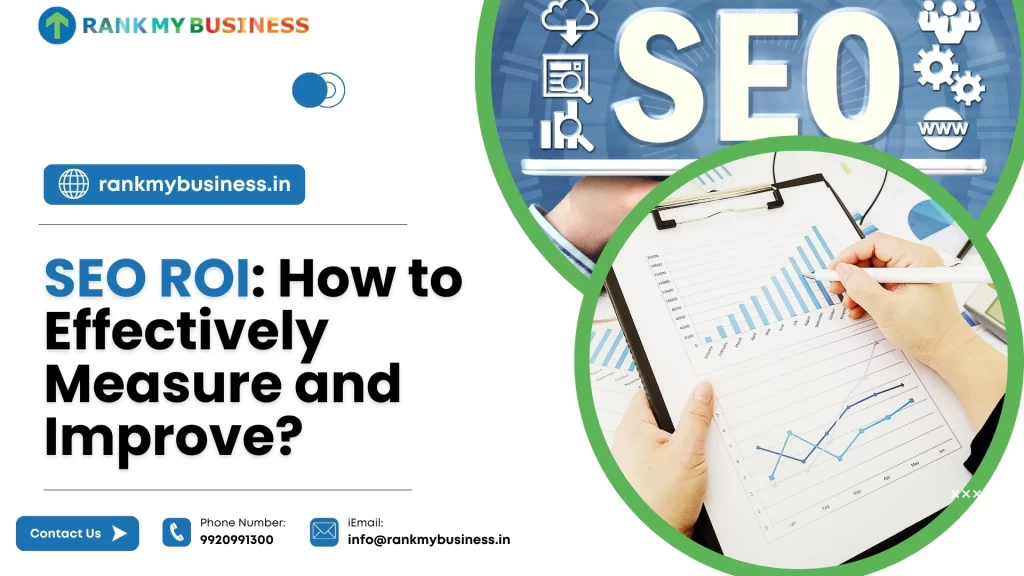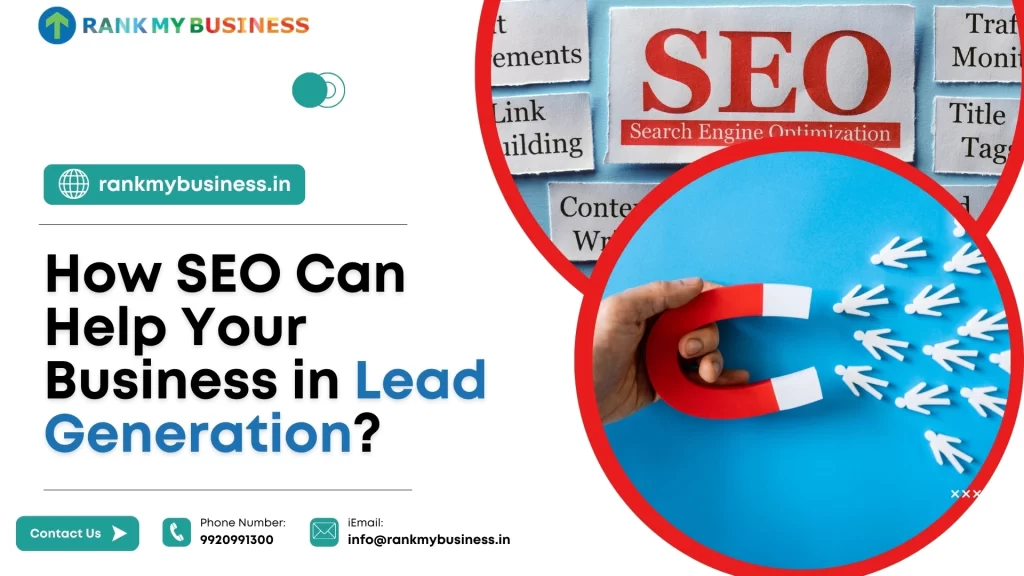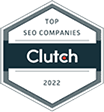Importance of Local Citations and Backlinks for SEO

In today’s digital age, standing out in search results is critical for any business. Search Engine Optimization (SEO) plays a key role in achieving this, and two essential elements that significantly influence your SEO performance are local citations and backlinks. While these terms may seem technical, their impact on your online visibility cannot be overstated. Let’s explore why they matter and how they can boost your online presence. What Are Local Citations? Local citations are mentions of your business’s name, address, and phone number (NAP) on other websites. These citations can appear on local directories, review sites, social platforms, or even blogs. Examples include Google My Business, Yelp, and industry-specific directories. Credibility and Trust: Accurate local citations signal to search engines that your business is legitimate and well-established. Search engines use this information to verify your location and relevance to local search queries. Local SEO Impact: If someone searches for a service in your area, consistent citations can improve your rankings in local search results. Customer Convenience: Citations make it easier for potential customers to find you, whether they’re searching for contact information or reading reviews. What Are Backlinks? Backlinks, also known as inbound links, are links from other websites that point to your site. These links are like votes of confidence, signaling to search engines that your website provides valuable content. Domain Authority Boost: Quality backlinks from authoritative websites improve your domain authority, making your website more likely to rank higher in search engine results pages (SERPs). Increased Traffic: Backlinks can drive referral traffic from other websites, bringing more visitors to your site. Enhanced Reputation: Backlinks from trusted sites add credibility to your business and signal to users that you’re a reliable source of information or services. Why Are Local Citations and Backlinks Important for SEO? Improved Local Search Rankings Local citations and backlinks work hand in hand to enhance your local search rankings. Search engines prioritize businesses with accurate, consistent information and positive signals from other websites. A combination of these elements ensures your business appears prominently in local search results, particularly in the coveted “local pack” on Google. Increased Visibility Backlinks from local and relevant websites help amplify your visibility online. For example, a backlink from a respected local newspaper or community blog can make your business more discoverable to local audiences. Competitive Advantage Many businesses still overlook the importance of local citations and backlinks, giving you a chance to outperform competitors. By focusing on these elements, you can position your business as a trusted authority in your area. Strengthened Online Reputation Positive mentions (citations) and links from credible sources establish your business as reliable and professional. These signals don’t just impact search engines—they also influence customer trust and loyalty. How to Build Local Citations and Backlinks Effectively? Building Local Citations: Claim and Optimize Listings: Create profiles on Google My Business, Bing Places, Yelp, and other relevant platforms. Ensure your NAP information is consistent across all listings. Leverage Local Directories: Submit your business details to local and industry-specific directories. Encourage Reviews: Ask satisfied customers to leave reviews on platforms like Yelp or Google, which enhances your citation value. Building Backlinks: Create High-Quality Content: Publish blogs, guides, and resources that other websites want to link to. Partner with Local Influencers: Collaborate with local bloggers or influencers who can link back to your site. Engage in Community Events: Sponsoring or participating in local events can lead to backlinks from event pages or media coverage. Common Pitfalls to Avoid Inconsistent Information: Inaccurate or inconsistent NAP details across platforms can confuse search engines and hurt your rankings. Low-Quality Backlinks: Links from spammy or irrelevant websites can harm your SEO rather than help it. Conclusion Local citations and backlinks are powerful tools in the SEO arsenal. Together, they build trust, increase visibility, and drive traffic to your site. By investing in these strategies, your business can establish a strong online presence, outshine competitors, and connect with local audiences effectively. Focus on maintaining accurate citations and earning high-quality backlinks to unlock the full potential of your SEO efforts. The results will speak for themselves: better search rankings, more customers, and sustainable growth for your business.
SEO ROI: How to Effectively Measure and Improve?

In today’s digital landscape, SEO (Search Engine Optimization) is a cornerstone of successful online business strategies. But how do you measure the success of your SEO efforts? Understanding and measuring SEO ROI (Return on Investment) is essential. Without a clear grasp of your SEO ROI, it’s challenging to justify ongoing investment in SEO and even harder to optimize strategies for better results. What is SEO ROI? SEO ROI is the calculation that measures the profitability of your SEO services and efforts relative to the cost invested. Essentially, it shows whether your SEO activities contribute positively to your bottom line. In digital marketing, where every dollar counts, understanding SEO ROI is crucial to maintaining a competitive edge. Basics of Calculating SEO ROI Calculating and maximizing your ROI can initially seem complex, but it boils down to a simple formula: SEO ROI = (Net Profit from SEO – SEO Cost) / SEO Cost x 100 Here’s a breakdown: Net Profit from SEO: The revenue generated through organic traffic and conversions. SEO Cost: The total cost of SEO efforts, including content creation, tools, and personnel. This formula provides a clear indicator of the effectiveness of your SEO strategy. However, to make this calculation meaningful, you need to dive deeper into key metrics that define SEO importance. Identifying Key SEO Metrics for ROI Measurement To measure SEO ROI accurately, it’s essential to understand the core metrics that feed into this calculation: Organic Traffic Growth: The primary metric for SEO success, representing the increase in visitors from search engines. Conversion Rate from Organic Traffic: Measures how effectively organic visitors are turning into customers. Customer Lifetime Value (CLV): Helps assess the long-term value of customers acquired through SEO efforts. Tools for Tracking and Measuring SEO Performance A handful of tools can help track, analyze, and optimize SEO metrics. Here’s a look at some of the best ones: Google Analytics: Tracks website traffic, user behavior, and conversion rates, offering in-depth insights into your SEO performance. Google Search Console: Monitors website health, keyword rankings, and potential indexing issues. Other SEO Tools: Ahrefs, SEMrush, and Moz offer robust SEO analysis, from keyword research to backlink audits. Using these tools provides a comprehensive picture of your SEO efforts and their impact on ROI. Role of Keyword Rankings in SEO ROI Keyword rankings reflect how well your site performs in search results. Ranking highly for keywords that align with your business goals can significantly improve SEO ROI. However, not all keywords are equal; focusing on high-intent keywords that attract qualified traffic is essential. Content’s Role in SEO ROI Content is the backbone of SEO. Quality content that provides value, answers user queries and ranks for relevant keywords contributes directly to SEO ROI. A well-defined content strategy is crucial, emphasizing the value of quality over quantity to ensure your investment drives results. On-Page Optimization and Its Impact on ROI On-page optimization includes enhancing elements like title tags, meta descriptions, headers, and images. Proper on-page SEO helps search engines understand your content better and improves user experience, both of which contribute to a higher SEO ROI. Technical SEO and Its Contribution to ROI Technical SEO ensures that your site is easy to navigate, loads quickly, and is accessible on all devices. Key areas include: Site Speed and User Experience: A fast, responsive site improves user retention and conversion rates. Mobile Optimization and Security: Google prioritizes mobile-friendly and secure websites, directly impacting rankings. These technical aspects might not seem directly linked to ROI, but they create a foundation for organic growth and improved user engagement. Link Building and SEO ROI Quality backlinks from reputable sources enhance your site’s credibility and ranking potential. But the emphasis should be on quality, not quantity; too many low-value links can harm your site’s performance. Social Signals and SEO ROI While not a direct ranking factor, social media can amplify your SEO efforts by driving traffic, building brand awareness, and engaging your audience. A strong social media presence can indirectly boost your SEO ROI by supporting visibility and engagement. Setting Realistic SEO Goals for ROI Measurement It’s essential to set achievable SEO goals aligned with business objectives. These can be both short-term (monthly traffic growth) and long-term (yearly ROI increase). Define your Key Performance Indicators (KPIs) clearly to assess progress accurately. Common SEO ROI Pitfalls to Avoid Avoid common mistakes like: Misinterpreting Metrics: Understand what each metric represents and avoid confusing traffic growth with revenue growth. Ignoring Long-Term Benefits: SEO is a long game; short-term dips don’t necessarily indicate failure. Strategies to Improve SEO ROI Enhancing SEO ROI requires continuous refinement of strategies. Consider: Improving Content and Keywords: Regularly update content to ensure relevance. Enhancing User Experience: Focus on site speed, mobile optimization, and ease of navigation. Conclusion SEO ROI isn’t just a metric; it’s a reflection of your business’s digital health. Measuring and improving SEO ROI helps refine strategies, optimize budgets, and increase profitability over time. While challenging, tracking SEO ROI is essential to sustain growth in a competitive landscape. Frequently Asked Questions How long does it take to see SEO ROI? SEO is a long-term strategy, typically taking 6-12 months to show significant ROI, though some improvements can appear within a few months. What’s the best tool to measure SEO ROI? Google Analytics and Google Search Console are top choices, but tools like SEMrush and Ahrefs offer additional insights. Can SEO ROI be improved quickly? While some tactics (like on-page optimization) can yield quick results, most improvements require consistent effort and patience. How does SEO ROI compare to paid advertising ROI? SEO typically has a higher long-term ROI compared to paid ads, though paid ads can provide quicker results. What are the biggest challenges in measuring SEO ROI? Major challenges include accurately tracking conversions, attributing revenue to SEO efforts, and distinguishing short-term gains from sustainable growth.
How SEO and PPC Strategy Work Together For Lead Generation?

In today’s highly competitive digital landscape, businesses must employ a mix of strategies to stand out and attract the right audience. Two of the most popular and effective strategies are Search Engine Optimization (SEO) and Pay-Per-Click (PPC) advertising. While both aim to increase visibility on search engines, they operate differently. When combined, however, they can produce powerful results, creating a synergy that boosts both organic and paid search efforts. But how do SEO and PPC strategies work together? Let’s dive deep into understanding how these strategies complement each other and why using both is essential for a successful digital marketing campaign. What is SEO? SEO (Search Engine Optimization) is the process of optimizing your website and its content to rank search engine results pages (SERPs) organically. It focuses on improving the visibility of a website without paying for placement in search engine results. SEO strategies aim to drive traffic by optimizing content around specific keywords, improving user experience, and building credible backlinks. Importance of Organic Search Traffic Organic traffic is considered one of the most valuable sources for a business because it’s driven by users actively searching for information related to your products or services. When your website ranks well organically, it builds trust and authority, which can lead to more conversions over time.Our Top-Notch SEO Services in Mumbai can help your business achieve higher rankings and better visibility in this competitive market. SEO is a long-term strategy, but the investment can pay off significantly when done correctly. What is PPC? PPC (Pay-Per-Click) advertising, on the other hand, is a form of paid digital marketing where advertisers pay a fee each time their ad is clicked. PPC ads typically appear at the top or bottom of search engine results pages (SERPs) and are marked as ads. Businesses bid on specific keywords, and depending on the quality and relevance of their ads, they can secure prime positions in search results. How Does PPC Work in Digital Marketing? PPC offers immediate visibility in search engines, making it ideal for businesses looking to generate quick traffic. You set a budget, bid on keywords, and when someone clicks on your ad, you pay a certain fee. It’s highly measurable, offering detailed data on performance, and allows for targeted advertising based on demographics, location, and behavior. Key Differences Between SEO and PPC Although SEO and PPC both aim to increase your website’s visibility, they operate on very different principles. Organic vs. Paid Traffic: SEO generates traffic organically without directly paying for clicks, while PPC is based on paid ads that appear based on bids and relevance. Short-term vs. Long-term Benefits: SEO is a long-term strategy that builds over time, while PPC delivers immediate results. However, PPC stops bringing traffic as soon as the budget runs out, whereas SEO continues to deliver traffic even after active efforts have slowed down. Benefits of SEO in Digital Marketing SEO offers several benefits that can help businesses achieve sustained growth over time: Long-Term Results Once your site ranks well for certain keywords, you can continue reaping the benefits without paying for each click. Organic rankings often last for months or even years with ongoing maintenance. Brand Credibility and Trust Ranking at the top of search results signals to users that your business is a trusted authority. Websites that rank well organically are often viewed as more credible than paid ads. Cost-Effectiveness While SEO requires investment in terms of time and resources, the traffic it brings is essentially free once you start ranking well. This makes it more cost-effective in the long run compared to continuous PPC campaigns. Benefits of PPC in Digital Marketing PPC also brings its own set of advantages, especially when speed and precision are key factors. Instant Results With PPC, you can see your website in the top search results almost immediately after launching your campaign. It’s ideal for businesses looking to drive traffic and conversions quickly. High Control Over Budget and Targeting PPC allows you to control your ad spend, making it easy to adjust your budget as needed. You can also target specific demographics, geographic locations, and even times of day to maximize your ad effectiveness. Best for Short-Term Goals If you’re running a sale, launching a new product, or simply need quick visibility, PPC can help you reach your goals within a short timeframe, unlike SEO which takes time to build. Why Combining SEO and PPC is Important Combining SEO and PPC can create a powerful digital marketing strategy. While SEO builds organic traffic over time, PPC can give your business the immediate boost it needs, especially for competitive keywords. Together, they allow you to cover both short-term and long-term marketing goals. Amplifying Results by Using Both Strategies By leveraging both strategies, you can increase your brand’s visibility across both paid and organic search results. This boosts the likelihood of attracting clicks from users who may prefer to click on either ads or organic results based on their preferences. Covering Both Organic and Paid Search Using both strategies allows you to dominate search engine real estate. When your website appears in both the paid and organic sections of the SERP, it increases your brand’s presence and gives users more opportunities to engage with your business. How SEO and PPC Can Work Together? Sharing Data and Insights One of the best ways to use SEO and PPC together is by sharing data and insights between both strategies. PPC campaigns can provide valuable data about which keywords are driving conversions, and this information can be used to improve your SEO strategy. Improving Keyword Strategy PPC data can reveal high-converting keywords that may not have been considered for SEO efforts. Similarly, SEO keyword research can help identify less competitive keywords that can lower the cost per click (CPC) in PPC campaigns. Increasing Overall Visibility Combining SEO and PPC allows your brand to appear in both paid and organic search results, doubling your chances of capturing user attention. This can result in more traffic and higher conversion
How SEO Can Help Your Business in Lead Generation?

In today’s digital landscape, generating leads is the lifeblood of any business. But how do you get potential customers to discover your services or products? The answer lies in SEO. Search Engine Optimization (SEO) plays a pivotal role in ensuring that your business stands out online, driving organic traffic that can convert into valuable leads. Whether your goal is to capture new clients or grow your customer base, leveraging SEO strategies can help businesses attract organic traffic that converts into leads. Let’s dive into how SEO can significantly boost your lead-generation efforts. What is Lead Generation? Lead generation refers to the process of attracting and converting strangers and prospects into people who have shown interest in your product or service. This interest is expressed through forms like visiting your website, filling out a contact form, subscribing to your newsletter, or requesting a free consultation. Why SEO is Essential for Lead Generation? Without SEO, your business may struggle to be found online, even if you have the best products or services. SEO focuses on increasing your visibility in search engines like Google, which, in turn, drives organic traffic to your website. When done effectively, SEO targets users who are already looking for what you offer, leading to higher-quality leads. Understanding SEO Services in Mumbai Local SEO in Mumbai Mumbai is a competitive market, with countless businesses vying for customer attention. Local SEO helps businesses rank higher in location-specific searches. By optimizing your business for local search, you improve the chances of being found by customers searching for services “near me.” Tailored SEO Strategies for Mumbai Businesses The key to effective lead generation in Mumbai lies in custom SEO strategies. Local SEO company in Mumbai will often include optimizing your website for location-specific keywords, such as “SEO services in Mumbai,” which ensures you’re reaching your target audience effectively. How SEO Increases Organic Traffic Organic traffic refers to visitors that find your website via a search engine. The more you optimize your site using proper SEO techniques, the better your chances of ranking higher in search engine results. High rankings bring more visitors, and more visitors increase the likelihood of generating leads. Organic traffic is highly valuable because it doesn’t require you to pay for ads—it comes naturally from your SEO efforts. Why Keywords are the Building Blocks of SEO? Importance of Targeted Keywords Keywords are the words and phrases people type into search engines when looking for services or products. For businesses, targeting the right keywords means your website can show up when a potential lead searches for something relevant to what you offer. Keywords like “SEO services in Mumbai” help you appear in relevant searches. Long-Tail Keywords for Specific Leads Long-tail keywords are more specific phrases that tend to have lower search volume but higher conversion rates. For example, instead of just “SEO,” a long-tail keyword might be “affordable SEO services in Mumbai.” These longer phrases tend to capture more targeted leads that are closer to making a purchase decision. On-Page SEO Techniques for Lead Generation Optimizing Meta Tags Meta tags are small pieces of code on your website that describe the content of your pages to search engines. Properly optimized meta titles and descriptions can boost your click-through rate and attract potential leads. High-Quality Content Creation Content is king when it comes to SEO. Publishing high-quality, engaging, and relevant content helps improve your rankings and draws potential customers to your site. Consistently producing fresh content, like blog posts about industry trends or FAQs, enhances your chances of being found online. Internal Linking Structure Internal links connect different pages on your website and help both users and search engines navigate your site more effectively. A well-structured internal linking strategy can improve SEO by increasing the time users spend on your site and guiding them to pages that convert them into leads. Off-Page SEO and Lead Generation Link Building Off-page SEO refers to activities that happen outside your website to boost its rankings. Link building is one of the most powerful off-page SEO strategies. The more high-quality websites that link back to yours, the more authority your site gains in the eyes of search engines, which can lead to higher rankings and more leads. Social Media Integration SEO and social media go hand in hand. Sharing your website’s content on social media platforms can drive more traffic, increase your online visibility, and generate potential leads. This is particularly important for local businesses in Mumbai looking to grow a strong online presence. The Importance of Local SEO for Businesses in Mumbai Google My Business Optimization One of the most effective local SEO strategies is optimizing your Google My Business (GMB) listing. A fully optimized GMB profile makes it easier for local customers to find you, read reviews, and contact your business. It’s a must-have for generating local leads. Local Backlinks Acquiring backlinks from local businesses, directories, and news outlets can significantly boost your local SEO efforts. Local backlinks indicate to search engines that your business is relevant to your area, increasing your chances of ranking for local searches. The Role of Mobile SEO in Lead Generation Mobile-Friendly Website Design With more people accessing the internet via smartphones, having a mobile-friendly website is essential. Mobile SEO ensures that your site works well on all devices, improving the user experience and boosting lead generation. Accelerated Mobile Pages (AMP) AMP is a technology designed to make mobile web pages load faster. Faster-loading pages lead to better user experiences, which can result in more leads. Incorporating AMP into your SEO strategy can give you a competitive edge. SEO Analytics: Tracking Leads and Conversions Analytics tools like Google Analytics help track your SEO performance. By analyzing traffic sources, bounce rates, and conversion rates, you can refine your SEO strategies to generate more leads. These insights are crucial for continuous improvement. How User Experience (UX) Affects SEO and Lead Generation A well-optimized website that offers a smooth user experience is more likely to convert visitors into leads. Search















